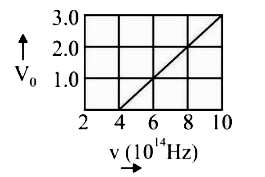A
B
C
D
Text Solution
Verified by Experts
The correct Answer is:
|
Topper's Solved these Questions
JEE MAIN REVISION TEST- 16
VMC MODULES ENGLISH|Exercise PHYSICS (SECTION 2)|5 VideosView PlaylistJEE MAIN REVISION TEST 8 (2020)
VMC MODULES ENGLISH|Exercise PHYSICS (SECTION 2)|5 VideosView PlaylistJEE MAIN REVISION TEST- 24
VMC MODULES ENGLISH|Exercise PHYSICS ( SECTION - 2)|5 VideosView Playlist
Similar Questions
Explore conceptually related problems
Knowledge Check
A
B
C
D
Submit
A
B
C
D
Submit
A
B
C
D
Submit
Similar Questions
Explore conceptually related problems
VMC MODULES ENGLISH-JEE MAIN REVISION TEST- 16-PHYSICS (SECTION 2)
- The stopping potential V(0) (in volt) as a function of frequency (v) ...
03:16
|
Playing Now - A sample of an ideal gas is taken through the cyclic process abca and ...
06:16
|
Play - Two moles of helium gas is mixed with three moles of hydrogen molecule...
01:57
|
Play - A concave mirror of radius 40 cm lies on a horizontal table and water ...
03:56
|
Play - The resistive network shown below is connected to a D.C. source of 16V...
02:51
|
Play - A projectile can have same range R for two angles of projection. It t1...
02:23
|
Play
